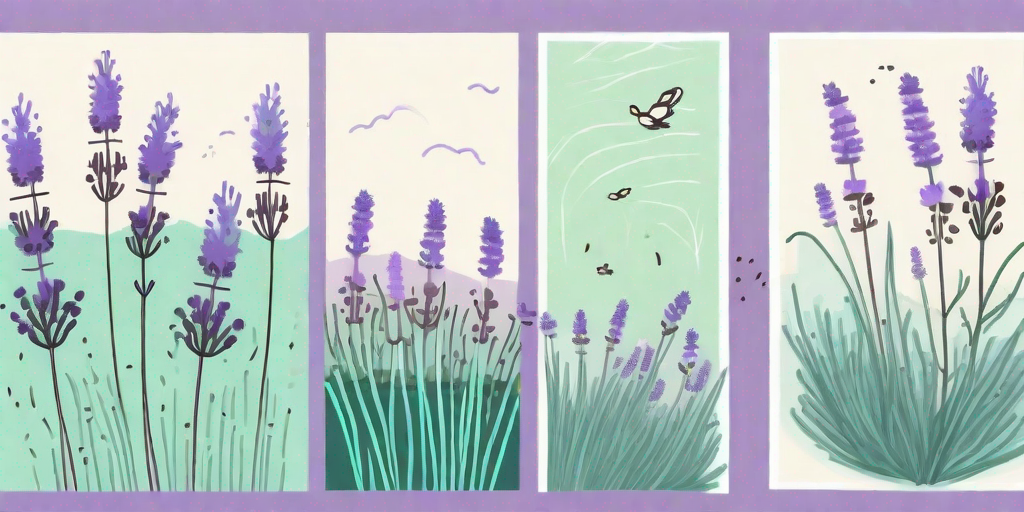
Welcome, green-thumbed enthusiasts and scent-seekers! If you've ever dreamed of cultivating your own fragrant fields of lavender, you're in the right place. Lavender farming may seem like a daunting task, but with a bit of patience, a dash of diligence, and a sprinkle of our cheeky humor, you'll be well on your way to becoming a lavender lord or lady. So, let's dive into the delightful world of lavender farming!
Understanding Lavender: The Purple Prodigy
Before you start sowing seeds and dreaming of lavender-scented sunsets, it's important to understand what makes lavender, well, lavender. This aromatic plant is more than just a pretty purple face - it's a hardy herb with a history as rich as its scent.
Lavender belongs to the mint family, which might explain why it's so refreshing. It's native to the Old World and is found from Cape Verde and the Canary Islands, Europe across to northern and eastern Africa, the Mediterranean, southwest Asia to southeast India. So, it's quite the globetrotter!
The Many Varieties of Lavender
Did you know there are over 40 species of lavender? Yes, forty! Each with its own unique scent and growth habits. Some are better suited for essential oils, others for culinary uses, and some are just there to look pretty. It's like a high school clique, but with plants.
Some popular varieties include English lavender (Lavandula angustifolia), French lavender (Lavandula stoechas), and Spanish lavender (Lavandula latifolia). Each has its own unique needs and quirks, so choose wisely!
Planting Your Lavender: A Step-by-Step Guide
Now that we've covered Lavender 101, let's move onto the fun part: planting! Don't worry, we won't leave you in the dirt. Here's a step-by-step guide to get you started.
Step 1: Choosing the Right Location
Lavender is a sun-loving plant. It's like that friend who's always trying to get you to go to the beach. So, make sure to choose a location with full sun exposure - at least six hours a day. Lavender also prefers well-drained soil. It doesn't like to have wet feet, so avoid areas where water tends to pool.
Remember, lavender is a Mediterranean plant, so it likes its space. Plant your lavender plants approximately 3 feet apart to allow for good air circulation. This isn't a crowded subway car, folks!
Step 2: Preparing the Soil
Lavender prefers a slightly alkaline soil with a pH between 6.7 and 7.3. You can test your soil's pH with a soil test kit. If your soil is too acidic, you can add some lime to raise the pH. If it's too alkaline, add some sulfur to lower the pH. It's like baking a cake, but with dirt.
Remember to also ensure your soil is well-draining. Lavender doesn't like soggy soil. If your soil is heavy clay, consider adding some sand or gravel to improve drainage. Or, you could plant your lavender in raised beds or pots.
Step 3: Planting the Lavender
Now, it's time to plant! Dig a hole that's about twice as wide and just as deep as the root ball of your lavender plant. Place the plant in the hole, making sure the top of the root ball is level with the soil surface. Backfill the hole with soil, firming it gently around the plant. And voila! You've just planted a lavender plant. Give yourself a pat on the back!
After planting, give your lavender a good watering. But remember, lavender doesn't like to stay wet, so let the soil dry out between waterings. It's a bit like Goldilocks - it likes its water just right.
Harvesting and Using Your Lavender
After all that hard work, it's time to reap the rewards! Harvesting lavender is a joy in itself - the scent alone is worth the effort. But what do you do with all that lavender? Don't worry, we've got you covered.
Harvesting Lavender
The best time to harvest lavender is when the buds have formed but the flowers haven't yet opened. This is when the lavender's essential oils are most concentrated. To harvest, simply cut the stems just above the leaves. It's like giving your lavender a little haircut.
After harvesting, bundle the stems together and hang them upside down in a cool, dark place to dry. This will preserve the scent and color of the lavender. Plus, it makes a pretty rustic decoration!
Using Lavender
Now for the fun part - using your lavender! Lavender has a myriad of uses, from culinary to cosmetic. Here are just a few ideas:
- Cooking: Lavender can add a unique flavor to dishes. Try it in cookies, cakes, or even savory dishes like roast lamb.
- Aromatherapy: The scent of lavender is known for its calming properties. Use it in a diffuser or make your own lavender sachets.
- Cosmetics: Lavender is great for the skin. Try making your own lavender soap or body lotion.
And there you have it - a comprehensive guide to lavender farming. Now, go forth and farm!
FAQs
What is the best time of year to plant lavender?
The best time to plant lavender is in the spring, after the last frost. This gives the plant plenty of time to establish before the winter.
How often should I water my lavender?
Lavender is drought-tolerant, so it doesn't need much water. Once established, you only need to water your lavender if the soil is dry to the touch.
Does lavender come back every year?
Yes, lavender is a perennial plant, which means it comes back year after year. However, it does need some care in the winter to protect it from harsh weather.
Can I grow lavender indoors?
Yes, you can grow lavender indoors, as long as it gets plenty of sunlight. A south-facing window is ideal.











